As I work with corporations making changes, I find many executives struggling with how employees can better deal with ambiguity and uncertainty in a constantly changing world. As much as they want to have all the answers, it’s simply impossible for anyone, including executives, to predict, plan, and provide all the details many employees expect.
At the same time, I see 1990s change management methods too often being applied in an attempt to address 21st century change challenges. It’s why clients search relentlessly (and pay top-dollar) for change management practitioners who have enough experience to know when to work inside and outside the lines—and when to invent totally new lines—instead of running down a checklist of deliverables for leading change according to a 1990s world.
Part of the problem is that many folks still want to manage change in a linear, step-like fashion, when in reality we live in a messy, non-linear world. Consider the era and theory that founded much of our thinking. “Unfreeze-Change-Freeze” was proposed by Kurt Lewin in 1947. Many change models we use today stem from this. It is a tidy theory for a mechanistic world, and likely worked quite well in the Industrial Era; however, it is incredibly unrealistic now. It assumes that you’re surrounded by a static environment—both inside and outside the organization. Never mind other global dynamics and market influences at play…they’ll freeze along with us! Attractive in theory; impossible in practice.
Changes being made in corporations today are immensely more complex with systemic effects that spread on a global scale like wildfire in nonlinear and unpredictable ways. Add to that, changes are no longer implemented one-at-a-time. Most employees find themselves dealing with multiple change initiatives simultaneously. A few years ago, I worked with a major sporting apparel company. The HR department had at least thirty projects on their portfolio for the next two years. Thirty! All of these involved new systems. That’s at least one new tool per month, sometimes more.
I had a moment of clarity about all of this when I was explaining William Bridges’ theory of transitions (1991) to a group of corporate IT employees who were having a rough time. Yes, I was attempting to normalize their feelings. Once again, we see the three-stage model (very similar to Lewin’s) where Stage 1, the Change, is presented as an event. A moment in time. The old way is gone, and the new way starts. Then Stage 2, the Neutral Zone, represents the transition where the new way isn’t comfortable yet. It’s normal and expected that you’re uncomfortable in this stage (even for positive changes!). From a corporate perspective, this is when employees’ energy levels and productivity drop. Fortunately, though, there is a happy ending when Stage 3 emerges as the New Beginning signaling we have adapted to the new way. Again from a corporate perspective, this is when employees become comfortable working in the new way; hence, their energy levels and productivity improve.
When I finished a much more elaborate explanation of this, my typically quiet and polite clients vehemently disagreed in a flood of frustration, “We never leave the Neutral Zone! We are always in the Neutral Zone! We never get to be comfortable. Before we get used to one change, they change it again!”
Now mind you, I also helped this client create a picture of their change portfolio—over 30 significant change initiatives for that year alone in a company of 1,900 employees. So I knew what they were saying was dead-on accurate. I admit to being a bit embarrassed and thought, “Wow.” I’m sure it feels that way to people dealing with the unrelenting demands of today’s world. My attempt to normalize what they were experiencing uncovered a new normal: they’re never comfortable.
My thoughts immediately went back to something I heard a Senior Vice President of HR say a few years earlier on the cusp of a major restructuring, “We need our people to be comfortable with the uncomfortable.”
Be comfortable with the uncomfortable. That is worth repeating. It’s basically about being able to deal with the ambiguity and uncertainty that comes from a rapidly changing world. It’s about living in the Neutral Zone and being okay with that. To me, this is the challenge for change management and organizational development practitioners today, not to mention employees and company leaders.
It’s no longer about creating a "sense of urgency," developing a "vision statement," and addressing "resistance" every time there is a change program. With at least 30-50 simultaneous change initiatives ongoing in any given company within a fiscal year, that approach would serve to create mass confusion in the best case and a mass exodus of talent in the worst case.
Now it’s more about tying a plethora of change programs to the company-wide vision. It’s about making the bigger picture crystal clear for folks and encouraging adaptability and flexibility and risk-taking. Good communication will always be a key ingredient and needs to provide as much clarity as possible, but also with the understanding that not all of the answers will be known, and even the best-laid plans will change.
Fortunately there are lengthy strides in the right direction. Complexity theory, positive psychology, and even Eastern perspectives about mindfulness are helping. And now there is finally a business book dealing with this very phenomenon. In late 2015, Bill Pasmore (Center for Creative Leadership) published Leading Continuous Change: Navigating Churn in the Real World.
Still, most change management models applied today need a refresh. Practitioners need to be able to be flexible, creative, and thrive in non-linear ways of working to address precisely what’s needed in a given situation.
We need to help employees be adaptable, agile, and able to cut through the ambiguous muck they encounter every day. As change practitioners, we need to help them think divergently and create their own clarity to ultimately become comfortable with the uncomfortable.
(Originally Posted Oct. 23, 2014)


